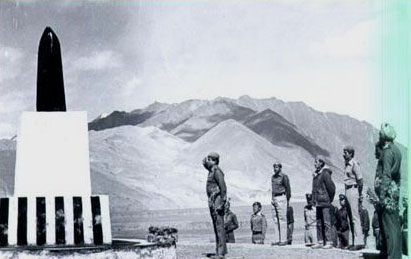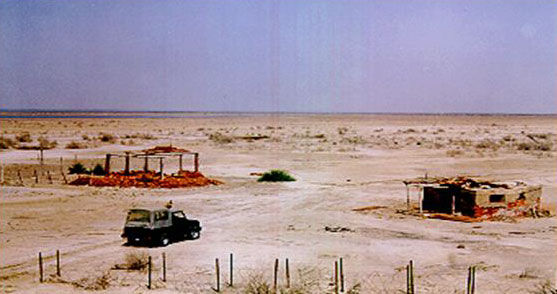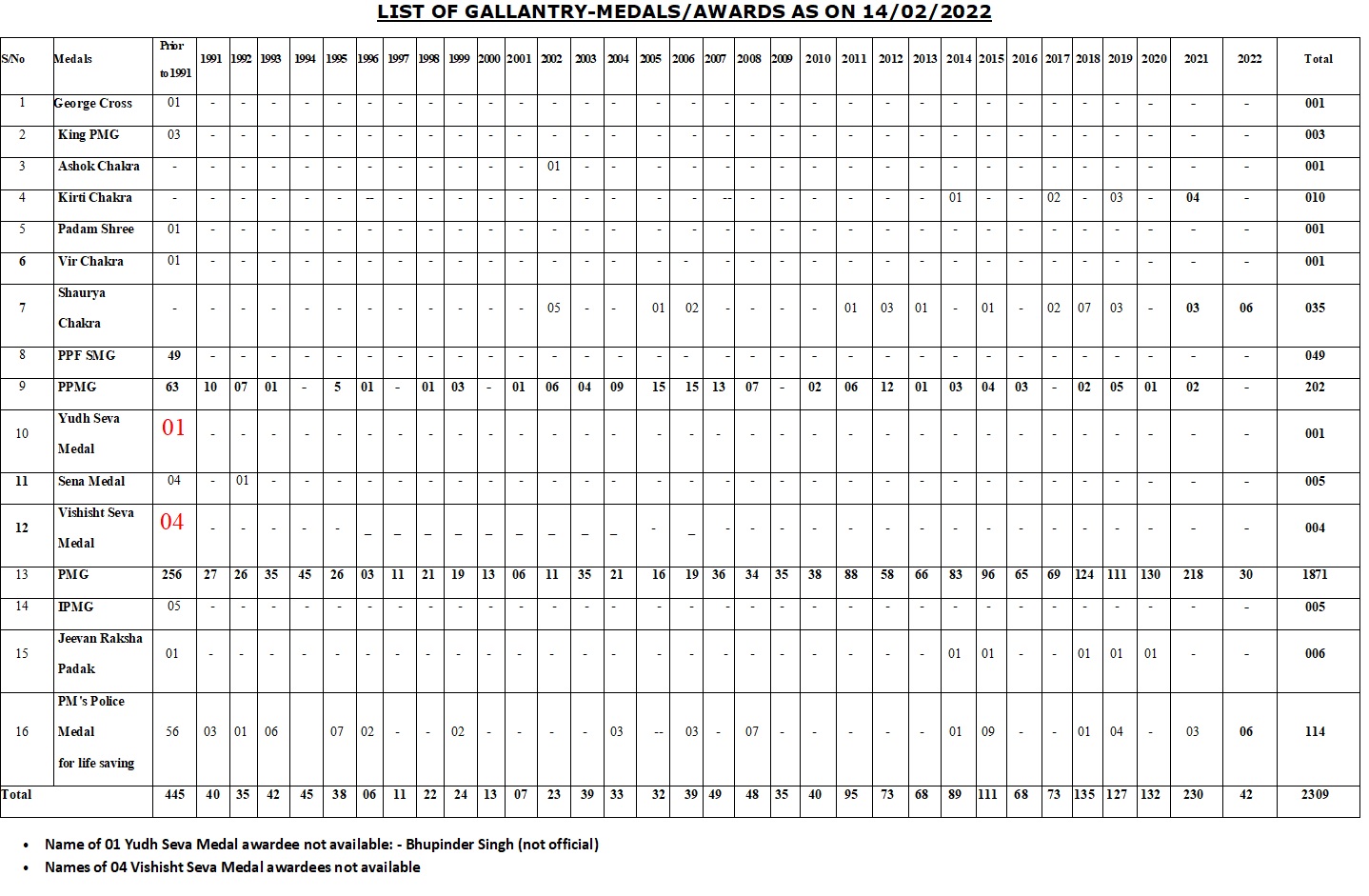The history of CRPF is replete with instances of heroic deeds and acts of valour from its very inception. With each such act, the CRPF has grown stronger and more resolute. Over time, the Force has evolved beyond its initial role as a police force assisting states in anti-dacoity operations and maintaining internal law and order. It has embraced new responsibilities, including combatting terrorism and insurgency.
The unwavering dedication to duty, remarkable achievements, and selfless sacrifices by the members of the Force serve as a lasting source of inspiration. These stories of loyalty, valour, and noble sacrifices will continue to inspire CRPF personnel for generations to come.
We remember and honour all our heroes, whether their deeds were widely recognized or quietly performed. We salute each one of them. Certain instances stand out when we think of sacrifice, love for our motherland, its unity and integrity, and the bravery of our personnel. These stories have become legendary in a grateful nation's memory, a nation that remembers its courageous police personnel and pays homage to the martyrs who have given their lives for the country.
Hot Springs, Ladakh, stands as a poignant symbol of bravery and sacrifice, etching a remarkable chapter in the history of the Central Reserve Police Force (CRPF). On that fateful day, October 21, 1959, the CRPF bore the brunt of the first Chinese onslaught in this remote region. A small CRPF patrol found itself ambushed and greatly outnumbered by Chinese forces. In the ensuing skirmish, ten courageous CRPF men made the ultimate sacrifice of their lives for their motherland. Their martyrdom on October 21 is solemnly observed across the nation as 'Police Commemoration Day.'
In the early days, the CRPF was entrusted with one of its most hazardous missions along the Indo-Tibetan border, near Aksai Chin. The dedicated service and sacrifices made by CRPF personnel in this challenging terrain continue to inspire us to this day.
In the early days, the CRPF was entrusted with one of its most hazardous missions along the Indo-Tibetan border, near Aksai Chin. The dedicated service and sacrifices made by CRPF personnel in this challenging terrain continue to inspire us to this day.
October 21, 1959, marked the day when this resolute group of soldiers came under heavy fire from Chinese troops armed with automatic weapons at a place known as "Hot Springs." Each of them displayed exceptional bravery, with a singular thought in their minds: they must, at all costs, hold back the aggressor to protect their motherland. At that moment, nothing else mattered. The CRPF patrol, though vastly outnumbered by a trained army with superior weaponry, put up an incredibly bold fight. Ten brave jawans made the supreme sacrifice of their lives for a cause they held dear.
This incident elevated "Hot Springs" to a sacred place in the hearts of the CRPF and declared the day as a martyrs' day for the entire Police Force of the country. While the Force might not have secured the official recognition of a corps d'élite for the Indian Police on that day, it undeniably proved its valour and commitment through the gallant sacrifice of ten of its men, staunchly defending their sacred land against an invading enemy.

From the freezing cold of Hot Springs to the scorching deserts of Sardar Post in the Rann of Kutch, the unwavering love for their motherland and the readiness to make the supreme sacrifice motivated small groups of our brave men to confront the enemy, thwart their nefarious plans, and fight to the very end.
In the early months of 1965, as Pakistan adopted an aggressive posture along the Rann of Kutch border, four companies of the 2nd Battalion CRPF were tasked with establishing border posts. Under the cover of darkness, on the night of April 8th and 9th, a force of 3,500 men from the 51st Infantry Brigade of Pakistan, comprising the 18th Punjab Battalion, 8th Frontier Rifles, and 6th Baluch Battalion, launched the "Desert Hawk" operation against our border posts. The Pakistani planners left nothing to chance, but they underestimated the determination of a small CRPF unit. Our men guarding the Sardar Post remained vigilant despite Pakistan's attempts to lull them into complacency through peace proposals.
Head Constable Ranjit Singh, stationed at Sardar Post, was manning a machine gun when he detected movement about 50 to 100 yards to his north. He challenged the intruders, and in response, a hail of bullets rained down, signalling the Pakistani forces to open fire with mortars and 25-pound shells. Simultaneously, a brigade-strength attack was launched on Sardar and Tak posts, both manned by four companies of the 2nd Battalion CRPF. The personnel in the posts conserved their ammunition and held their fire until the last moment, allowing the enemy to close in. The eerie silence made the Pakistanis believe that all the post's occupants had been killed or injured in the shelling.

To their credit, Ct. Shiv Ram of Sardar Post spotted an enemy observation post 600 yards away directing artillery and mortar fire. Subedar Balbir Singh swiftly directed CRPF mortar fire to eliminate this enemy observation post. As the attacking columns closed in, all three machine guns at the post sprang to life, unleashing a deadly barrage of fire that swiftly neutralized the enemy. Another wave of the enemy attack from the rear met the same fate. Fourteen attackers lay dead, and four were captured alive. Despite a momentary setback when the machine gun at the northeast corner of the post jammed, CRPF personnel quickly regrouped and launched a counterattack, repelling the enemy. While the enemy managed to capture 19 CRPF personnel, including the post commander Maj. Sardar Karnail Singh, they were unable to achieve another breakthrough.
The exchange of fire lasted an hour, during which the enemy made three attempts to overrun the post but were repelled with heavy casualties. The bravery of Head Constable Bhawana Ram, positioned on the eastern perimeter of Sardar Post, was instrumental in demoralizing the intruders. Even when the machine gun in his vicinity was silenced, he collected grenades and relentlessly threw them at the enemy attempting to close in. His fearless actions significantly contributed to the enemy's retreat. The retaliatory response of the CRPF personnel left such a profound impact that the enemy, despite their numerical and armament advantage, dared not launch another assault.
The valour displayed by all CRPF personnel, who fought selflessly, motivated solely by their duty to defend their motherland at all costs, earned the admiration and recognition of a grateful nation. This battle was hailed as a "Military Battle" by the then Union Home Minister, not merely a police battle.
The service and sacrifice of these brave souls will forever be remembered, celebrated, and honoured as "Valour Day" of the Force for generations to come.

The brave Jawans of the Force faced a formidable test when militants launched a suicidal attack on Parliament House on December 13, 2001. In an intense exchange of fire between the CRPF and the militants, which lasted approximately 30 minutes, all five militants were eliminated. During this skirmish, a Mahila Constable displayed extraordinary courage and presence of mind, making the ultimate sacrifice in the line of duty.
Both houses of Parliament, including the Prime Minister and Home Minister, commended the exceptional role played by CRPF Jawans in this operation. In recognition of their valour exhibited in this encounter, the late Mahila Constable was posthumously honoured with the "Ashoka Chakra," while four Jawans received the "Shaurya Chakra" on January 26, 2002.


On July 5, 2005, a group of five armed terrorists attempted to breach the security cordon surrounding the Ram Janambhoomi/Babri Masjid Complex in Ayodhya. They managed to infiltrate the outer security perimeters, but they were met with resolute resistance from the CRPF, which formed the inner security ring. Our courageous Jawans valiantly confronted the terrorists, thwarting their malevolent intentions and eliminating all of them on the spot.
In recognition of their exemplary valour, Shri Vijeto Tinyi, Assistant Commandant, and Shri Dharambir Singh, Head Constable, were honoured with the prestigious 'Shaurya Chakra' by the honourable President of India, Shri A.P.J. Abdul Kalam.
Constable Bhrigu Nandan Choudhary, a valiant member of the 205 Bn, CRPF's elite CobRA force, was posthumously honoured with the Kirti Chakra. He demonstrated unwavering determination, exceptional courage, and remarkable bravery while facing a life-threatening situation.
In a fierce gun battle against Naxals in the Chakarbandha forest area of Gaya district, Bihar, Shaheed Bhrigu Nandan Chaudhary displayed incredible resolve. Despite sustaining severe wounds and the complete mutilation of both his legs in an IED blast, he persevered, crawling forward despite excruciating pain. He took up a strategic position near a pit, continuing to engage the Naxals in combat.
Even while injured, Bhrigu Nandan Choudhary assisted his comrade, Constable Daleep Singh, in changing his magazine, all the while encouraging others to fight fearlessly. He boldly fired at the advancing Naxals, eliminating at least six of them and causing injuries to many others. With unwavering determination, he fulfilled his mission before making the ultimate sacrifice, preventing further harm to his team and the potential seizure of weapons by the Naxals.
In the spirit of Thucydides' words, "the bravest are surely those who have the clearest vision of what is before them, glory and danger alike, and yet, notwithstanding, go out and meet it," Constable Bhrigu Nandan Choudhary embodied true bravery.
Constable Ashish Kumar Tiwari of the 202 CoBRA Battalion was posthumously awarded the 'Shaurya Chakra.' On July 26, 2010, CRPF troops conducted a search operation in the village of Kamya and the adjoining jungle area in the West Midnapur district of West Bengal, acting on specific information about the movement of 20-25 Naxalites, including their prominent leaders, Sidhu Soren and Buru.
Upon encountering the troops, the Naxalites initiated indiscriminate firing and detonated multiple IEDs. The troops retaliated, leading to a 2-hour-long encounter. During this fierce battle, CT/GD Ashish Kumar Tiwari displayed exceptional gallantry despite sustaining bullet injuries. Regrettably, he later succumbed to his injuries.
Subsequent searches resulted in the discovery of the lifeless bodies of six Naxalites, including the top Maoist leader, Sidhu Soren, who served as the Secretary of PCPA and was a prominent figure in SKGM. Furthermore, a substantial cache of arms and ammunition was also recovered.
Based on intelligence indicating the presence of a Naxal group in the hills of Hurmur and Ganeshpur, a combined team of CRPF personnel and civil police, led by Assistant Commandant Shri. Ravindra Kumar Singh, embarked on an operation from Lohardanga, Jharkhand at 0430 hrs. Upon reaching the Hurmur forest area, the team navigated a winding trail flanked by bushes and rocks, running parallel to a stream and nestled between two hill ranges.
Approximately 1 km into this challenging terrain, the team was suddenly confronted by simultaneous explosions spanning about 800 meters. These explosions resulted in injuries to a majority of the troops, including Shri R.K. Singh, who suffered a severe injury to his left leg. The Maoists, swarming from three flanks, opened heavy fire on the combined party. Despite their injuries, the team bravely returned fire.
Shri R.K. Singh, despite his grievous injury and profuse bleeding, remained composed and maintained communication with senior officers. He continuously urged the troops to stand their ground and defeat the Naxals. His determination spurred the troops to retaliate even more vigorously. Shri Singh used an improved tourniquet to treat his wound and continued to engage the Naxals while leading the troops from the front and providing constant guidance. He did so until reinforcements and a rescue team arrived at the scene.
Thanks to his unwavering efforts, the Naxals were unable to execute their plan to seize the weapons and harm the troops, despite their advantageous position. Shri R.K. Singh exhibited exceptional bravery and leadership, preventing the Naxals from achieving their objectives and safeguarding the arms of the security personnel under extremely adverse conditions.
Acting on information from the Superintendent of Police, Paschim Midnapur, regarding the presence of 5-7 armed Maoists in the jungle area northeast of village Burisole, approximately 13 km from Jhargram, a joint operation was organized. Two teams were deployed at different locations and converged at their rendezvous (RV) around 1600 hrs. As a small probing team, comprising personnel from the two CoBRA teams, cautiously approached the target area, it came under a hail of Maoist gunfire, exposing the force personnel to a perilous situation.
Two courageous CoBRA commanders, Sh. Nagendra Singh and Sh. Vinoj P. Joseph, disregarding their own safety, opted for a direct head-on advance into the line of fire. In the initial advance, Shri Nagendra Singh was wounded by a grenade splinter, while Vinoj P. Joseph was pinned down by a hail of bullets that narrowly missed him. Undeterred, they signalled their determination to proceed, moving within 10-15 meters of the enemy's location. A fierce firefight unfolded between the Maoists and the two officers. This swift and resolute counterattack by the commanders and their small team of 5 personnel not only shielded the other team members from injuries and casualties but also greatly rattled the Maoists. Following the firefight, a thorough search of the area led to the discovery of a dead body holding an AK-47, later identified as Koteshwar Rao, also known as Kishanji.
Shri Nagendra Singh and Shri Vinoj P. Joseph, Assistant Commandants of 207 CoBRA, exhibited exceptional courage, inspirational leadership, and unwavering determination during the operation against the Maoists.
